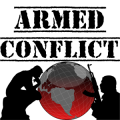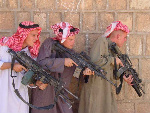[1] In my experience, anyone who fired at me is in what we can call Category 1.
[2] Anyone who did not but seemed likely to fire given a chance is in Category 2A. Anyone who did not and might not was suspect until proven not a potential threat (Category 2B). Anyone who offers cooperation is accepted conditionally and cautiously until some proof of their intent is shown (Category 2C). Anyone who does cooperate, seems unlikely to shoot at me is in Category 2D.
[3] Anyone who fights with me is in category 3A. Anyone who has fought with me on multiple occasions and thus has proven some loyalty or appreciation of the benefits of a mutually rewarding relationship is in category 3B.
[4] Fellow members of my own or closely allied units are in category 4.
As I'm sure you already know Category 1 persons are easily identified on the battlefield and should be killed.
Categories 2-4 persons should not be killed if possible. However, they bear considerable watching and due to necessary action ([1] above), Category 2 persons may be accidentally killed on a sliding scale of A to D with A being of small consequence and B being avoided if at all possible, C being avoided in most cases while killing D is to be avoided even at some cost *.
Category 3 persons should not be killed but 3A persons
must be closely watched unless and until they move to Category 3B. Those in 3B must still be loosely watched...

Category 4 persons should not be killed unless they are engaged in wrongdoing. Unfortunately, even some of them bear watching...
















Bookmarks